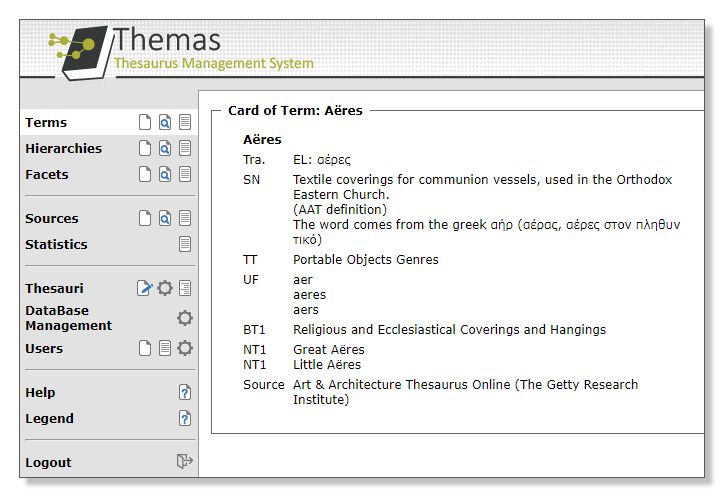Each concept entry in the thesaurus should have:
One preferred term
A preferred term is the term that is selected in order to represent a concept. Each concept is represented by one preferred term but can have any number of non-preferred terms. Each preferred term should represent a single concept.
Zero, one or many Non-preferred terms
Each concept can have several non-preferred terms. The are not part of the thesaurus hierarchy and are not used for indexing or searching, but they are provided as an entry point in a thesaurus
A scope note
A scope note is a brief text that is used to clarify the boundaries of a concept, especially when the meaning of the preferred term in ordinary discourse can be interpreted too broadly or too narrowly. It is used to:
- Restrict the application of a term
- To distinguish between terms that have overlapping meaning in natural language
- To provide advice on term usage
A scope note is not intended to be a full definition but should clarify the intended use of a term within the thesaurus and state the chosen meaning of the term. It also may indicate other meanings that the term might have, but which have been deliberately excluded from the controlled vocabulary since they have no application within the domain of discourse that is represented by the thesaurus.
- Terms with which they have an equivalence relationship. (equivalence relationship)
- Links to concept entries to which they have a semantic relation (associative relationship)
- Links to one (hierarchical relationship) or more broader concepts (poly-hierarchical relationship)
- References
- A concept can also have a History note that tracks the development of the term over time, and it explains when, how and why it was changed.






